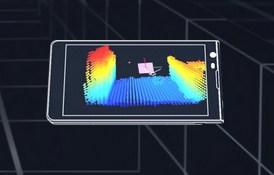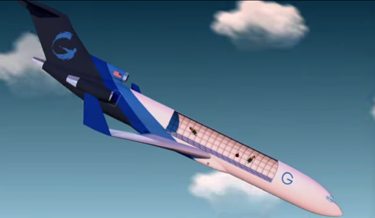| New Use Case For Google Project Tango |
| Written by Lucy Black |
| Sunday, 04 May 2014 |
|
Google's is collaborating with NASA on a project that will takes its Project Tango smartphones into space to go aboard the International Space Station. This is taking developers into an unfamiliar environment - zero gravity. When we initially reported on Project Tango, an Android that has built-in depth sensors that builds a 3D model of its surroundings, we were left pondering the question "what are you going to do with it?"
The idea that it could have an important role on the IIS wasn't one of the ones that came to mind. However, as we learn about the joint venture between Google Advanced Technology Projects (ATAP) and NASA Ames Research it seems that integrating the Tango Smartphone device into NASA's SPHERES is a match made in heaven, or rather a combination that is ideal for space. Project Tango is an attempt to create a mobile device that perceives and understands space and motion in the same way as humans do. The current prototype is a 5” Android phone containing highly customized hardware and software designed to track the full 3-dimensional motion of the device while simultaneously creating a map of the environment. Its sensors allow it to make over a quarter million 3D measurements every second, updating its position and orientation in real-time combining that data into a single 3D model.
ATAP's joint venture with NASA Ames Research Center is to integrate a Project Tango prototype onto a robotic platform, called SPHERES, that fly inside the International Space Station to develop zero-gravity autonomous platforms that could act as robotic assistants for astronauts or perform maintenance activities independently. Synchronized Position Hold, Engage, Reorient, Experimental Satellites (SPHERES) are bowling-ball sized spherical satellites intended to used inside the IIS to test autonomous rendezvous and docking maneuvers. Three free-flying spheres will fly within the IIS cabin of the station, performing flight formations. By attaching a Project Tango smartphone with its mapping capabilities to a SPHERES robot, the autonomous balls can navigate though the space station and perform low-level duties that would usually fall to the astronauts. While floating in the zero-gravity environment, the smartphone will construct a 3D map of the station which will guide the SPHERES to where they need to go without bumping into all the delicate equipment. This seem fine in theory but it now needs to be tested and for this members of both the ATAP and the Ames research teams prepared to take a Zero G flight over Texas on G-FORCE ONE, Zero Gravity Corporation's specially-modified 727-200. As ATAP's Program Manager, Ryan Hickman, explains in the video: What this Zero G flight is going to let us do is test all the systems as they would operate in space. Simulation doesn't work, we've got to fly it.
Teams go up in groups of three, a test director, someone operating a laptop receiver and someone operating a sphere. So far this sounds like any other test - but far from it. As the pilot of the plane dubbed as the "vomit comet" explains in the video: Nowhere else can you deal with aerobatic maneuvers over and over again in a commercial airplane. On a standard flight you take off nose up maybe 6 to 10 degrees, reach a cruising altitude, then you descend and land. On this flight we take off, climb up to 19,000 feet, pull 1.8g up to 35,00 and then descend at 26,000 feet a minute back down to 19,000 feet.
This cycle repeats and just looking at the animation in the video makes me feel queasy although I still like the use of a rubber duck to indicate the zero-G sweetspot and watching the Google/Ames team flying weightlessly around the cabin while performing the crucial tests makes it look is if it could actually be fun. It certainly is a very different way to establish use cases. More InformationRelated ArticlesGoogle Moves Into 3D With Project Tango
To be informed about new articles on I Programmer, install the I Programmer Toolbar, subscribe to the RSS feed, follow us on, Twitter, Facebook, Google+ or Linkedin, or sign up for our weekly newsletter.
Comments
or email your comment to: comments@i-programmer.info |
| Last Updated ( Sunday, 04 May 2014 ) |





